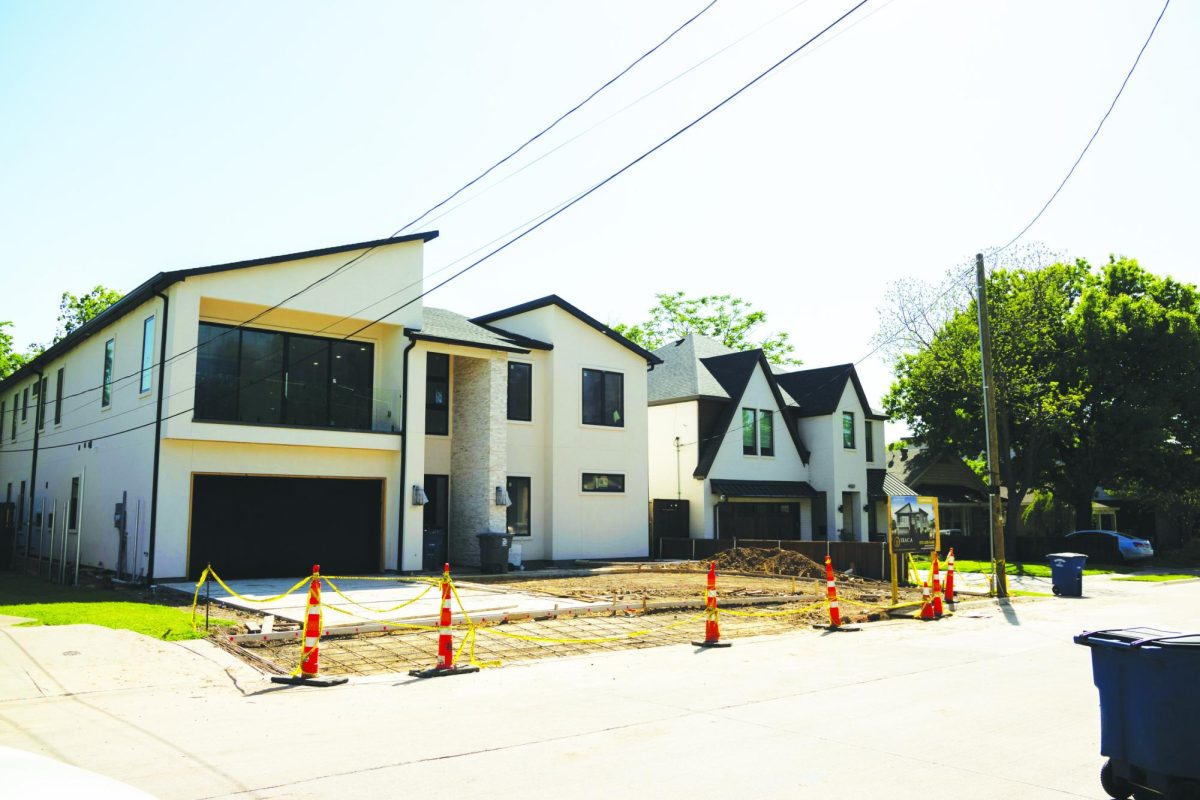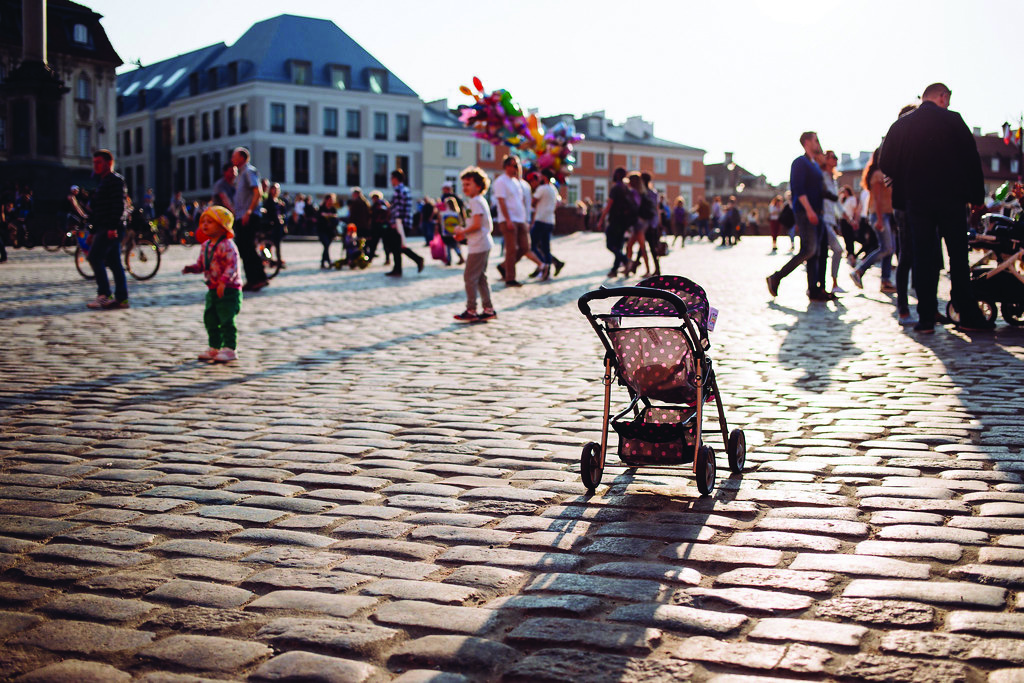A decade ago in Gilbert-Emory — a predominantly Black neighborhood in West Dallas — certain homes just under 700 square feet sold for $11,000. Now, the new townhouses next door are triple their size, selling for at least $600,000.
Similar patterns can be seen across not only the state of Texas but also the entire nation — modern homes towering over old residencies, luxury condos lining the streets of small towns, business chains displacing longtime establishments.
In 2017, nearly 40 percent of homes sold in Dallas were bought by investors, not families. Instead, they went to house flippers, investors, developers and builders. In that same year, Dallas was ranked among the top 20 most intensely gentrifying cities in the United States.
By 2022, The Dallas Morning News reported that housing affordability dropped to 12 percent of the housing stock. Currently, one in five neighborhoods in Dallas is already in the early stages of gentrification.
And as per The Dallas Morning News, it’s predicted that by 2032, the typical Dallas renter will only be able to afford 21 percent of rental units, and those looking to buy homes in the area will only be able to afford less than two percent of homes available on the market.
Neighborhood evolution is an occurrence that naturally occurs as time unfolds, but once gentrification begins, long-time residents who often live in historically marginalized communities soon face rising housing costs, property taxes and cultural shifts due to the influx of residential and commercial growth.
“When prices go up, people get displaced,” Director of Community Service Jorge Correa said. “Some senior citizens who’ve been there a long time might end up homeless. That affects places like Austin Street Center or North Dallas Shared Ministries, where they turn for clothes, health services or mental health support. It’s a ripple effect.”
But the cycle isn’t unique to just the DFW metroplex — it’s being played out in cities across the country as well.
Correa said that this pattern can be seen taking place in communities such as New Orleans after Katrina, where he witnessed traditional homes getting replaced by modern cafes and hotels.
On the surface, any type of development appears beneficial for cities. According to some, the process can attract emerging businesses and modernize infrastructure in struggling neighborhoods, which in turn creates important benefits for original residents. But other studies point out that if this transformation isn’t carefully orchestrated, it often results in the displacement of community inhabitants.
As property values rise due to gentrification, the residents who have lived in those neighborhoods face increasing financial pressures, forcing many to sell their homes.
Factors including unaffordable property taxes, lack of legal documentation and real estate investors seeking more opportunities can contribute to gentrification.
And for many, what was once a relatively stable community might become an area more difficult to afford living in. In some parts of West Dallas especially, certain home values have more than doubled, in addition to the steadily climbing rent prices.
Yet another symptom of gentrification is the cultural displacement that occurs in these environments. To Natalie Breen, the Chief Operating Officer at Wesley-Rankin Community Center, this outcome ultimately makes community members feel unwelcome — alienated in their own neighborhoods.
And in areas like West Dallas, the shifting of demographics also invites shops and other miscellaneous services to begin catering more primarily to new residents, turning a blind eye to legacy residents in the process.
“Neighbors may no longer speak your language or attend school with your children,” Breen said. “Small business owners are pushed out, cultural institutions change — maybe a change of grocery stores and the products you’re used to buying — a displacement of social support networks, all these things ultimately drive displacement and push people out.”
For Correa, the impacts of “moving in” extend far beyond the mere price discrepancies, as the social fabric of a gentrified neighborhood also unravels.
A tangible disruption in social life between residents of the same neighborhood surfaces — new residents often bring in different lifestyles and expectations that have the potential, on certain occasions, to create invisible barriers between the community’s denizens.
“Imagine a big, modern house with huge square windows next to a small, humble one,” Correa said. “It’s not good for either side. The old residents feel resentment, like, ‘how do I invite people over when the neighborhood’s not the best anymore?’”
Another common occurrence that comes with gentrification is that for those who have stayed on their properties for lengthy periods of time, their property values often seem to skyrocket overnight.
As a result, he believes that the problem with gentrification is not only caused by families increasing prices at an exaggerated rate, but that it’s also caused by deep-pocketed companies that view neighborhoods’ transformations as merely strategic assets for their business and rapid development opportunities — all with the sole goal of reaching maximum profit potential.
“It makes sense that some displaced people end up homeless,” Correa said. “Low-income renters in old houses get pushed out when landlords sell for good money. Many are seniors, and they’ve been there forever and don’t have anywhere to go.”
From Breen’s perspective, these housing challenges also reveal the deeper systemic inequities that can surface during the process of urban development.
“It makes the work of community-based organizations all the more important and valuable,” Breen said. “Unfortunately, there just aren’t enough affordable homes in our city to provide safe housing for all and we all feel the impact of that.”
Tackling the problem is far from a unilateral effort — it requires collaboration between a variety of entities, including public, private, nonprofit, government and individual community leaders.
Currently, several strategies are already in place, such as helping homeowners apply for tax relief programs, working with legal clinics to help residents establish clear ownership of inherited properties, educating families on financial literacy and preserving affordable housing by keeping land in the hands of the community.
“In West Dallas, we’ve learned over the years that collaboration is essential to addressing tough challenges,” Breen said. “There’s a saying that we really resonate with that goes, ‘If you want to go fast, go alone, but if you want to go far, go together.’”
This spirit of synergy is at the core of community-led initiatives like the West Dallas Community Vision Plan, a collective effort between residents, nonprofits and city planners to shape development in a way that prioritizes affordability.
A multitude of other efforts also exist within the DFW area, including Breen and her team at Wesley-Rankin and Haynes Boone, a law firm that worked with them to ensure that homeowners would be able to protect their assets.
One of the ways to battle unaffordable housing is to build houses from the ground up that are inherently much cheaper than traditional houses on the market, and that is what Correa hopes to accomplish every year, leading the Habitat for Humanity initiative here in Dallas.
Correa has directed the Habitat for Humanity initiative for roughly 20 years, and he remembers “back when Habitat was a big thing, they’d stand in a huge circle with families holding hands.” But now, he says that gentrification has noticeably changed how they operate.
The efforts to create affordable housing are increasingly displaced by the very crisis they aim to solve, as rising costs due to gentrification “evict” not only the poorer families of a neighborhood, but also might jeopardize the feasibility of building low-cost houses — rendering once-viable solutions financially out of reach.
“The last Habitat for Humanity house we built this year wasn’t in West Dallas anymore,” Correa said. “Instead, it was in East Dallas, since it was at a lower cost. We’re starting over in a new neighborhood, but eventually, it’ll get too expensive there too.”
This potentially constant relocation of Habitat for Humanity projects poses a growing challenge in terms of the ability to fund future building initiatives. Yet for Correa, people in need of assistance will always be within the vicinity, and the mission to help them still remains.
“I don’t think it will get so bad to the point that Habitat for Humanity becomes impossible,” Correa said. “People move to where their needs are, and gentrification just shifts things, it doesn’t stop it. We’ll keep moving to where we’re needed, like nomads.”
From Correa’s perspective, the primary purpose of Habitat for Humanity is not to simply build houses or buy land, but it’s to help people who need their support, whether it’s “building a house, playing music for them or just keeping company,” the volunteers will always be there for them. Correa says that they can’t solve everything, but their efforts can make their lives easier by taking “one step at a time.”
“Gentrification will keep happening. It’s like development, you can’t really seem to stop it,” Correa said. “But we should focus on doing it without hurting people, respecting their right to live where they want. St. Mark’s will adapt, and we’ll go where the need is.”
Although the process of changing neighborhoods is natural, Breen sees gentrification as something that isn’t entirely inevitable.
Community centers like Wesley-Rankin scattered all across the U.S. are essential to piecing together strategies to solve the harmful social consequences that occasionally arise with the ever evolving dynamics of neighborhoods.
Through regular assessments and evaluation with mass data sets, Breen believes that not only is their approach to addressing the issue of gentrification at Wesley-Rankin more refined, but it also ensures that their efforts are creating an actually meaningful impact.
She emphasizes that sustainable development needs to provide space for growth and also pay attention to affordability, but she also acknowledges that the plan is harder to put into action than it sounds.
For students, this gap between policy blueprints and lived reality becomes a call to action — one that challenges them to wield influence not from boardrooms but from classrooms, sidewalks and the quiet persistence of showing up.
“Share what you learn at school and with family or on social media,” Breen said. “Invite local experts to speak at your school and spread awareness. Support local businesses in communities that are experiencing rapid development. There are tons of ways to stay connected to the problem and help be a part of the solutions.”
While these policy proposals sketch a roadmap toward equity, their success hinges not just on political will but also on the kind of grassroots stewardship that Breen champions. It’s a reminder that systemic change is only as durable as the groundswell sustaining it.
“Students at St. Mark’s may not have direct policy-making power, but your voices and actions are powerful in shaping public opinion, influencing decision-makers and driving impact,” Breen said. “Even small actions like raising awareness, supporting local businesses and volunteering at agencies like Wesley-Rankin can make a big impact.”









